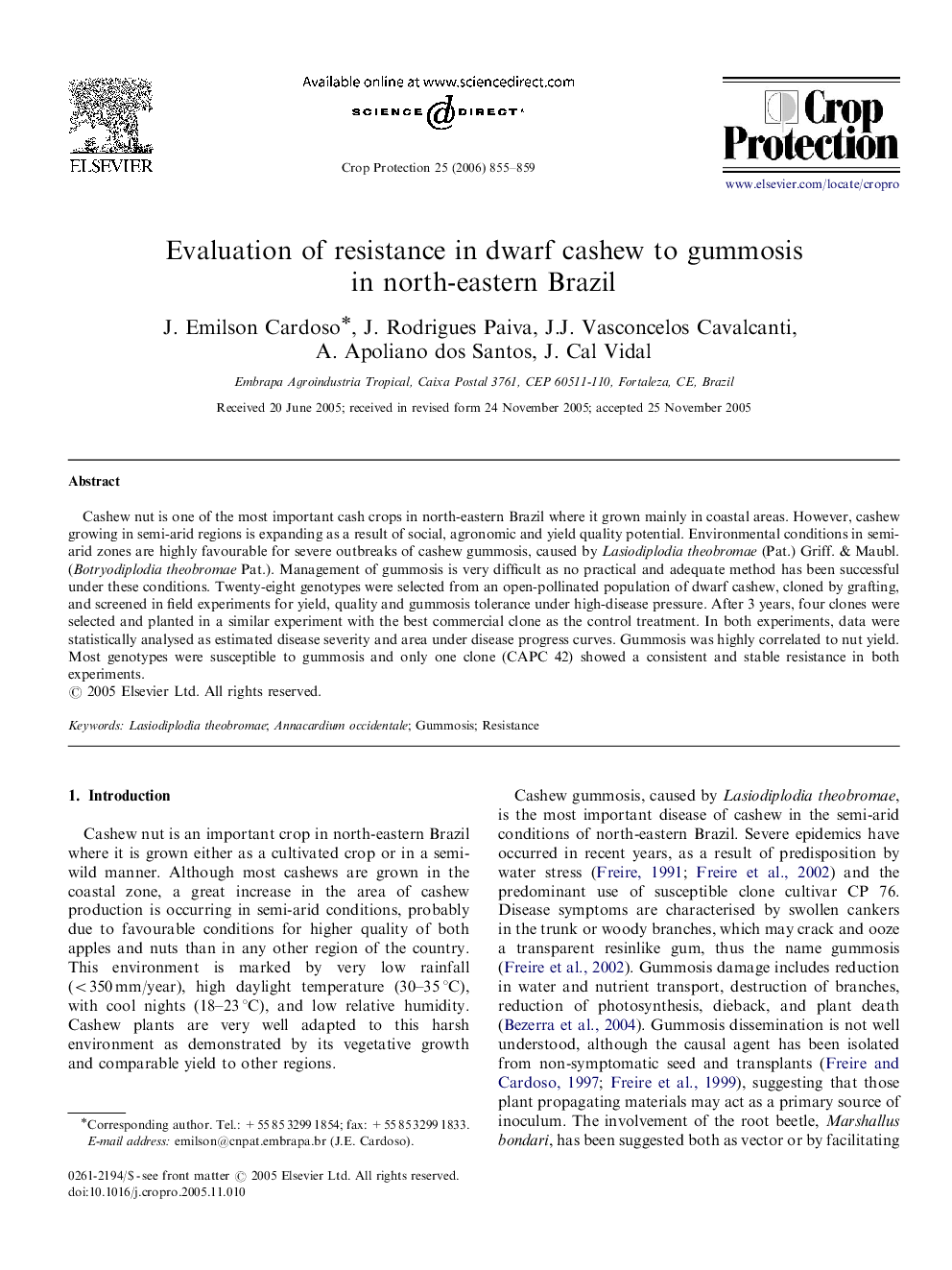| Article ID | Journal | Published Year | Pages | File Type |
|---|---|---|---|---|
| 4508016 | Crop Protection | 2006 | 5 Pages |
Cashew nut is one of the most important cash crops in north-eastern Brazil where it grown mainly in coastal areas. However, cashew growing in semi-arid regions is expanding as a result of social, agronomic and yield quality potential. Environmental conditions in semi-arid zones are highly favourable for severe outbreaks of cashew gummosis, caused by Lasiodiplodia theobromae (Pat.) Griff. & Maubl. (Botryodiplodia theobromae Pat.). Management of gummosis is very difficult as no practical and adequate method has been successful under these conditions. Twenty-eight genotypes were selected from an open-pollinated population of dwarf cashew, cloned by grafting, and screened in field experiments for yield, quality and gummosis tolerance under high-disease pressure. After 3 years, four clones were selected and planted in a similar experiment with the best commercial clone as the control treatment. In both experiments, data were statistically analysed as estimated disease severity and area under disease progress curves. Gummosis was highly correlated to nut yield. Most genotypes were susceptible to gummosis and only one clone (CAPC 42) showed a consistent and stable resistance in both experiments.
